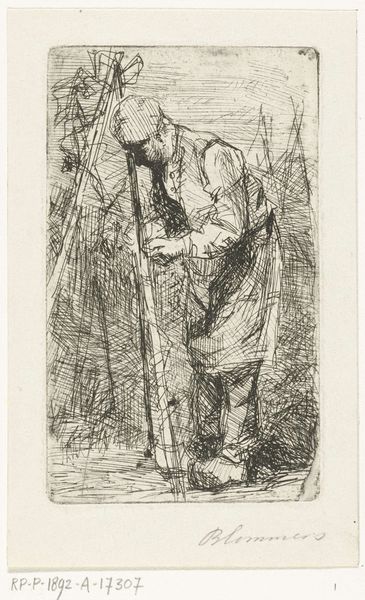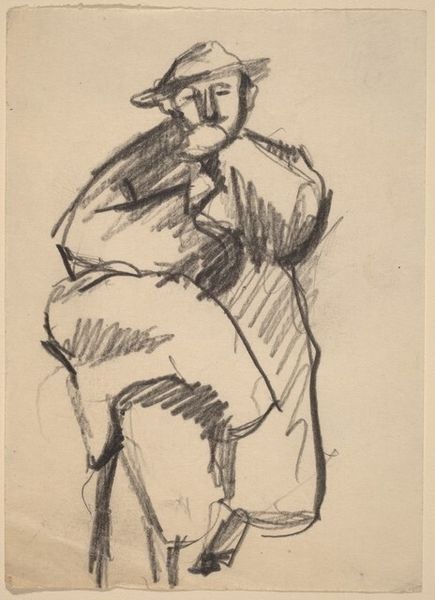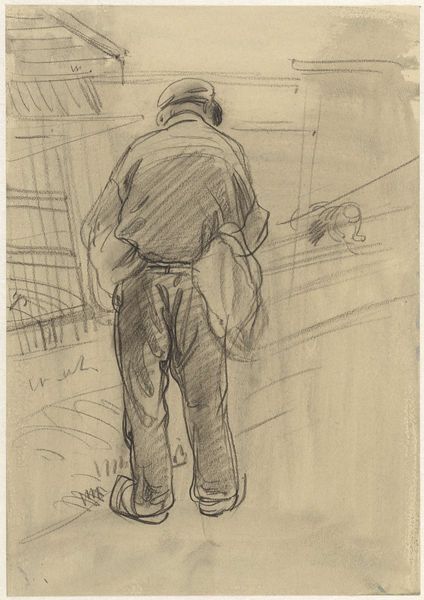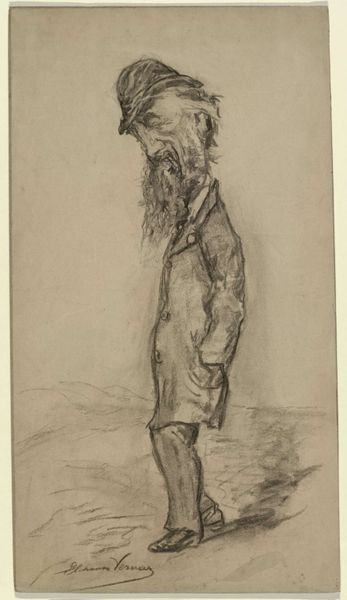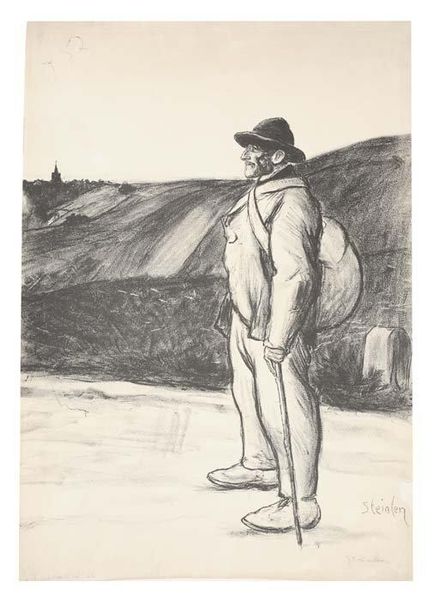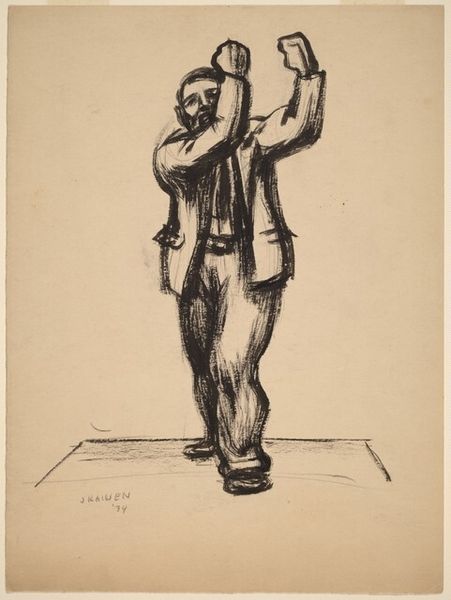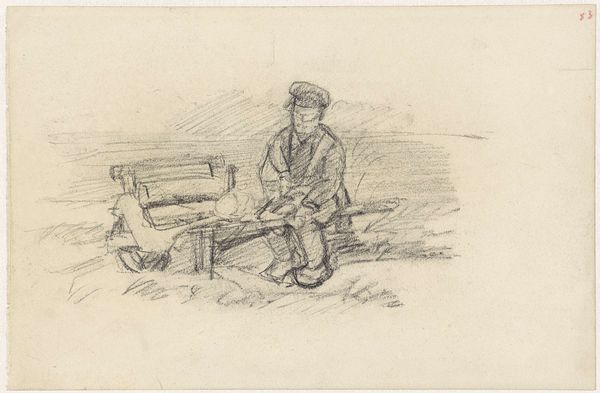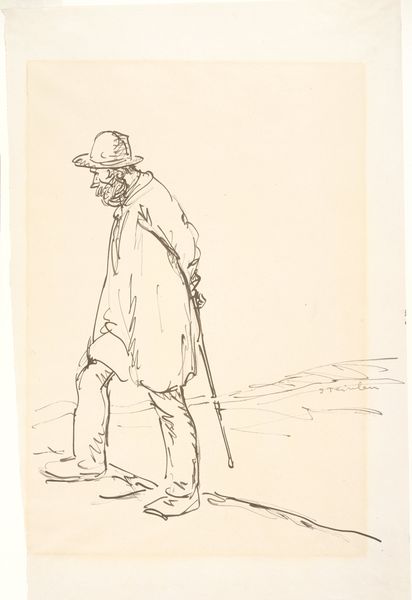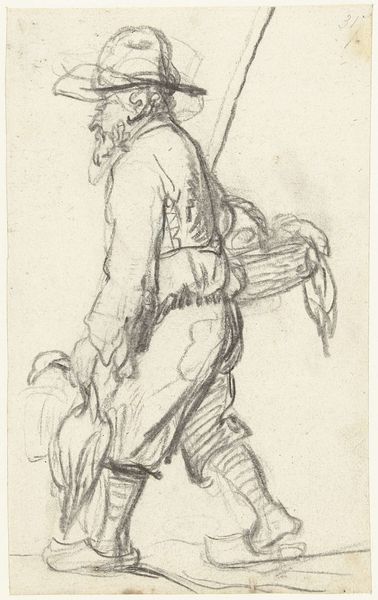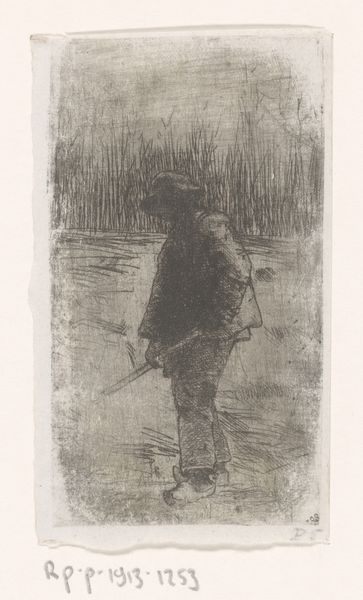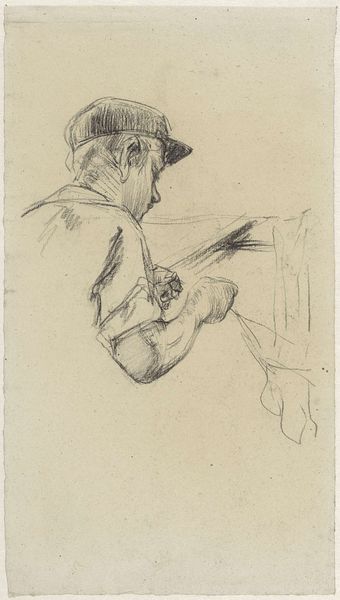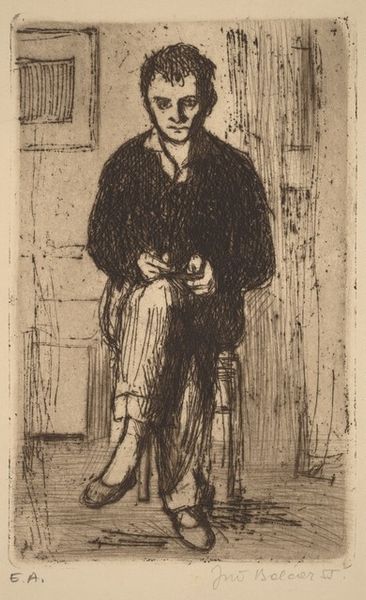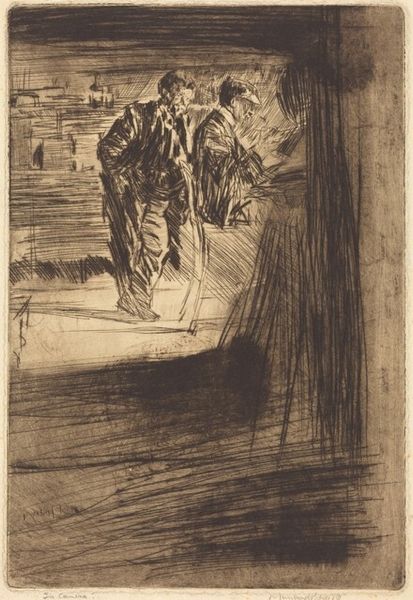
#
pencil drawn
#
amateur sketch
#
toned paper
#
light pencil work
# print
#
pen sketch
#
pencil sketch
#
personal sketchbook
#
pencil drawing
#
pen-ink sketch
#
pencil work
Copyright: National Gallery of Art: CC0 1.0
Editor: This print, "Lone Soldier in Battle-Dress," was created around 1919 or 1920 by André Dunoyer de Segonzac. The somber figure and stark lines give it such a desolate, lonely feel. What do you see in this piece? Curator: It speaks volumes about the human cost of war. Segonzac created this piece in the aftermath of World War I, so it’s impossible to separate it from the social and political upheaval of that time. The lone soldier, burdened and anonymous, becomes a symbol of the countless individuals whose lives were forever altered. Notice how the landscape around him seems barren, punctuated by what appear to be grave markers. Editor: Yes, there's almost a graveyard right at his feet! Was Segonzac trying to make a statement about the glorification of war, maybe? Curator: Precisely! Many artists at that time were challenging dominant narratives about heroism and national pride. This image offers a counter-narrative: one of loss, disillusionment, and the psychological toll of conflict. Consider also the stylistic choices - the scratchy, unfinished quality. It reflects a world that felt broken and uncertain, pushing back against traditional academic art that often romanticized warfare. Where do you think he would fall on a spectrum of supporting or criticizing the war? Editor: That’s a really powerful point. It’s as if the rawness of the image echoes the rawness of the experience. It's less about a specific battle and more about a universal experience of trauma. I wonder how audiences reacted at the time. Curator: I suspect with a mix of emotions - grief, anger, perhaps even a sense of recognition. It certainly served as a reminder that the war was not just a matter of political victories, but of deeply personal human stories. This image still resonates today as we reflect on contemporary conflicts and their lasting consequences. Editor: Seeing it as a challenge to romanticized views of war really shifts my understanding. Thank you! Curator: And considering it in the context of how art responds to social trauma enriches its meaning, I think.
Comments
No comments
Be the first to comment and join the conversation on the ultimate creative platform.
